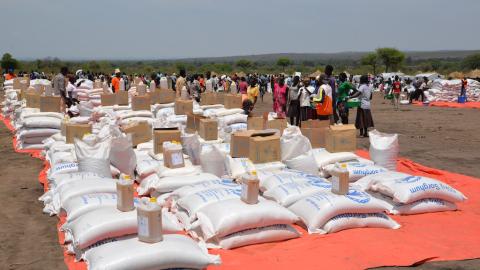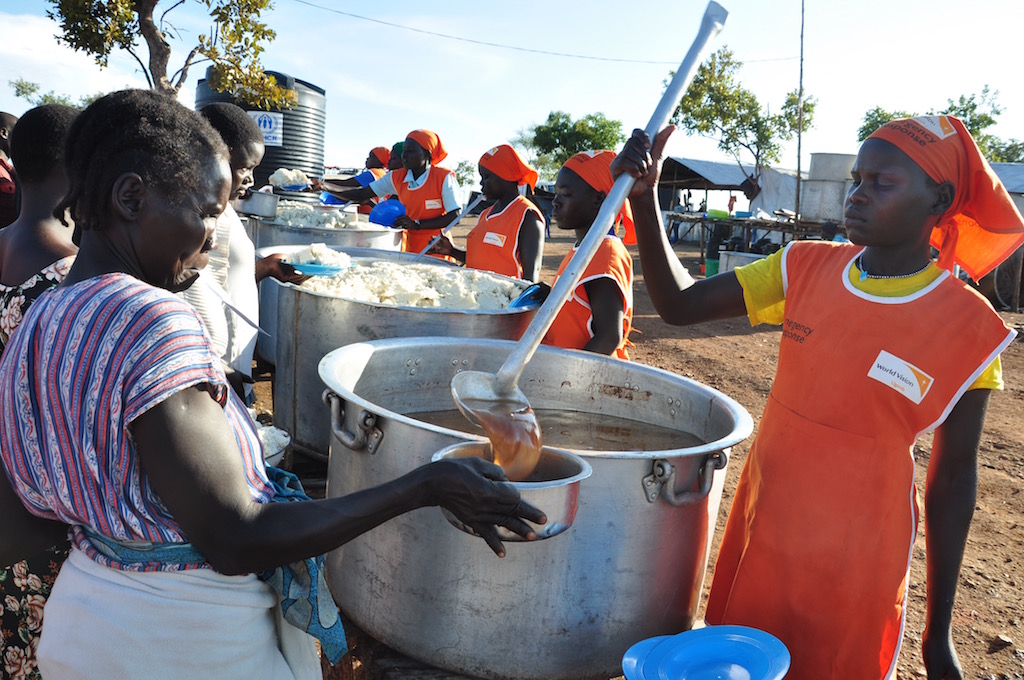
Emergency Response
As the world faces an array of natural and man-made disasters, the needs of vulnerable populations are evolving. We are also changing.
With operations in 82 out of 116 districts around the country and a global commitment to having a sustained impact in the lives of children, we are reinforcing our holistic approach to disaster management.
Our child-focused disaster management strategy, DM2020 (Disaster Management 2020), represents an internal and external shift to a more nimble and responsive model. This model is underpinned by increased use of evidence-based impact, leading disaster management technologies and strengthened inter-agency collaboration. Our initial priorities will see the delivery of specific disaster management programmes focused on children, especially children in conflict.
We have a distinct advantage in leveraging on our global development footprint to embed individual and community resilience, early warning, disaster preparedness and mitigation programming into community development models.
Through DM2020, we are shifting from the old definitions of emergency response and development, which maintained that the two types of interventions were completely separate. Instead, our new model will integrate disaster management with development.
Children are described as the most vulnerable community members during disasters and they usually comprise 50 to 60 per cent of the people affected by disasters (UNICEF, 2014). Currently, Uganda is a host to:
- 1,505,323 refugees from more than nine countries with South Sudan and the Democratic Republic of Congo accounting for 92%.
- Of the total, 82% are women and children
- Over 16,000 children arrived at the border unaccompanied or separated from their parents
- 15% of youth say that they are “thriving”
- 1 in 10 children can read at the level they should
- 80% of refugee households can’t provide basic needs for their children
Our Approach
When disasters happen, be they natural or made by humanity, children are often faced with food shortages, lack of clean water, loss of shelter and the death of loved ones. These factors make them vulnerable to physical injury, disease, disruption of education, separation from families and at increased risk of trafficking and exploitation.
Protective factors that assist children affected by disasters include:
- Personal factors such as faith, belief that one individual can act to make things happen.
- Family factors such as a strong bond with the primary caregiver, the mental health of the mother, availability of other family caregivers, and;
- Community-level factors such as social support, the value of altruism and responsibility to care for others.
We are committed to helping children who are affected by disasters and will continue to do so. Before disaster strikes, we will work with children to make sure they understand how they and their families can reduce their vulnerability to disasters. During disasters, our staff will be in communities assisting families with their immediate needs and recovery from the crisis. Following a disaster, we will continue to help children and their families rebuild their lives.
Our child-focused disaster management will continue to give priority to children, especially the poorest and most vulnerable, and empower them (together with their families and communities) to improve their well-being. We see the child not in isolation, but as part of a family and a community. The quality of these relationships is very important for the resilience and well-being of children.
Impact*:
- Every month, we distribute food to 381,815 people (226,386 children)
- 42 Child-Friendly Spaces established benefitting over 50,000 children with a safe space to play and access to psychosocial support
- 3,500 children have been placed in foster families
- 15,000 unaccompanied, separated or otherwise vulnerable children are under case management
- 385 savings groups formed with over 11,000 members.
- 770,979 refugees reached
- 13,280 metric tones of food distributed
- 59,563 people supported with more than eight billion Uganda shillings worth of cash donations
*Statistics as of 2018
- Learn how basic household items make the daily struggle to survive a little bit easier for refugees in Uganda.
- Watch this video to learn how monthly food distributions work for refugees.
- Meet some of the heroes behind our refugee response programmes.
